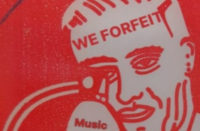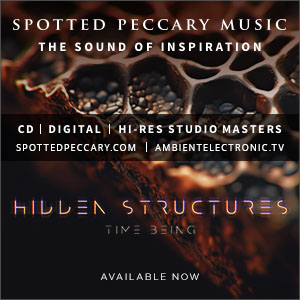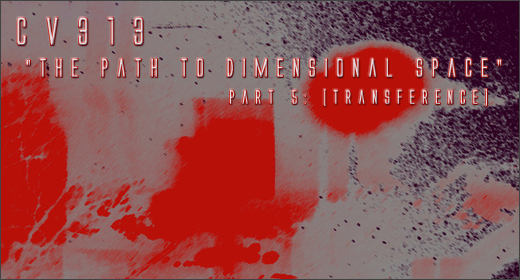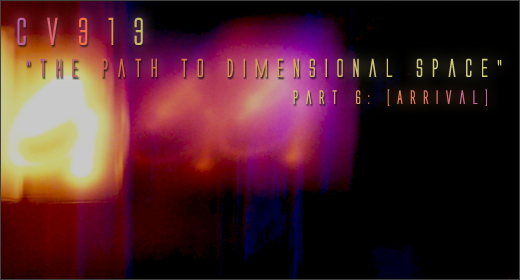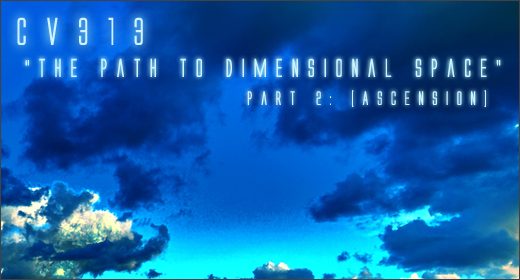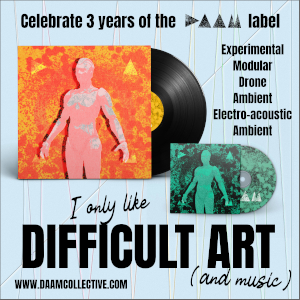Read Part 4: Trajectory
Read Part 2: Ascension
Introduction
In part three of this ongoing series covering the work of cv313 we focus on a particularly highly regarded piece by cv313, the immersive “Beyond The Clouds.” Stephen Hitchell talks about the dub techno genre, the creation of the track and the processes of mixing and mastering through to packaging and release. A review of the Beyond The Clouds [Reprised] Versions CD that compiles three different versions of the track follows.
Q & A with Stephen Hitchell
![]() Dub techno can be something of an enigma, and for many remains an esoteric sub-genre with an almost homogeneous sound, but for those who persist it can be one that often rewards far more than others. What is the essence of dub techno to you, and how would you pitch the genre to dub-techno skeptics or those new to the genre?
Dub techno can be something of an enigma, and for many remains an esoteric sub-genre with an almost homogeneous sound, but for those who persist it can be one that often rewards far more than others. What is the essence of dub techno to you, and how would you pitch the genre to dub-techno skeptics or those new to the genre?
SH :: “This is an interesting question, I’ve never given much thought to the term, “Dub-Techno” as I don’t feel most of what I make could or should be classified into a genre like this one. I also feel the term is bastardized with very few people actually making what I would consider “Dub-Techno.”
Dub in its own right is a music type founded and built in Jamaica and 99% of the what people call “Dub-Techno” has zero to do with those roots. Then you have techno on the other hand which was respectively born in Detroit and lets not forget Chicago. I grew up listening to Lil Louis and Dj Pierre’s “Wild Pitch”, Transmat, Metroplex and KMS, UR, Red Planet, Axis, etc. and it’s quite difficult to hear the relationship.
Even in the case of Basic Channel’s productions paring with UR, Jeff Mills and Juan Atkins, I would simply identify these records as a variation of Detroit Techno and I think that’s how they were meant to be. Those records have less to do with Dub and more to do with techno.
When I was younger I remember getting some of those records in advance at Record Time before most people knew what they were. Everyone in Detroit thought it was an artist from Detroit. They weren’t imports, domestically pressed at Archer and cut by Ron Murphy @ NSC, it was a little confusing. It wasn’t until they branched off into Rhythm & Sound those Dub roots became more obvious, “Smile” and “Mango Walk” obviously standing out as a hybrid of Dub music but again, I still wouldn’t call them “Dub-Techno” for the record.
I’m not fond of the term as I don’t think it’s applicable in most cases, I think there’s Dub music and there’s electronic music and many variations of it. I think the term is a short cut to thinking. Call me old school or whatever but when I was first discovering this music in the 80’s and early 90’s it was all quite simple: you had ambient, ebm, drum and bass, dub, house, industrial, reggae/roots, trance and then you had techno and many variations of all of them.
I liked it better that way, it was less confined and restricted giving the buyer more room to discover new music regardless of its variation or genre classification. There’s a million sub-genres now and its so easy to miss out on music simply because of how it’s categorized.
If I were trying to open someone up to this genre I would simply ask if they liked quality electronic music (not EDM). If they liked Aphex Twin, chances are they’ll love this sound!”
![]() “Beyond The Clouds” fills an entire disc on this release with just three versions, the second of which is substantially different. In a genre where the devil is in the detail, do you find that the lines can sometimes blur between a remaster, a remix or a completely new track altogether?
“Beyond The Clouds” fills an entire disc on this release with just three versions, the second of which is substantially different. In a genre where the devil is in the detail, do you find that the lines can sometimes blur between a remaster, a remix or a completely new track altogether?
SH :: “Of course it can become a little blurry but there’s always a purpose. It’s really about how these things work together, a key element molding the compositions into one. I try to be selective in how loosely the term “remix” gets thrown around. A remix in my eyes is taking key ingredients from an original composition and using them in your own.
My theory on this subject (and it’s all art so there’s no real set rules) is to listen to the source material and find a feeling that works, find inspiration in the source and make an interpretation of it. In this sense is it really new source material or a remix? I’m not so sure but if the feeling is there and there’s a common thread between the two they’ll find harmony with one another and that’s what’s most important to me.
With this particular disk all of the versions were recorded in the same session. The second one you mention was very “dry” with little to no use of effects but there was a common element, the “organic” nature of the analog sequencers used in all three recordings. Many of the versions were done using a lot of re-synthesis, taking the original source sounds and re-synthesizing them which also leads to very different end results.”
![]() Do you normally intend for there to be multiple versions of a single track, or is it something that occurs naturally from the recording process?
Do you normally intend for there to be multiple versions of a single track, or is it something that occurs naturally from the recording process?
SH :: “Having multiple versions of everything I record has to less to with intention and more to do with the process. In the recording model of today, you loop sequences on a computer screen, automate and adjust until it’s perfect and bounce it down to one song file. It’s all very precise with less room for improv.
My methods are a bit dated as I was hugely influenced by King Tubby, Adrian Sherwood and Lee Perry in the way they mix music and make an art form out of the process of mixing. It’s much more instinctive when it’s hands on a board and effects units. I’ve tried both methods of recording and there’s something to be said about keeping things “hands on”, analog and raw. It strips down the options BUT it manufactures more feelings and you’ll never yield the same results twice.
In this process each recording of the same song can be easily altered by moving a chord around in the patch bay, adjusting the movements on an analog sequencer or changing the frequencies ever so slightly on a modular, so you’re more inclined to experiment and record multiple versions of the same song.”
![]() “Beyond The Clouds [Reprised] Versions” was one of a series of – to date – four releases packaged in black slip-cases with large square stickers. What was the thinking behind this series of releases?
“Beyond The Clouds [Reprised] Versions” was one of a series of – to date – four releases packaged in black slip-cases with large square stickers. What was the thinking behind this series of releases?
SH :: “Honestly, I wasn’t all that keen on the packaging ideas. At the time I had a friend working with me and he did research on the packaging for mail order projects. The most pressing issue we had was shipping digipaks or CDs that would end up getting cracked, so using cardstock mailer sleeves made more sense. I did, however, like designing the stickers to compliment the 12″ releases – there’s a close similarity. I’m completely color blind, which is partially why I have a strong affinity for black and white imagery and the use of silver and metallic inks.
I also think this represents the mechanical nature of the music very well. Most of my studio is filled with chrome knobs and silver boxes, so it’s very natural for me to have these attractions to metal. Most of my old synths (the ones closest to me) are built using metal components, unlike the synthesizer market of today where it’s all built using plastic disposable materials.”
![]() How did “Beyond The Clouds” come to be on the B-side of “Seconds To Forever” originally, rather than a release in its own right?
How did “Beyond The Clouds” come to be on the B-side of “Seconds To Forever” originally, rather than a release in its own right?
SH :: “I had actually planned to release Beyond The Clouds as a 3LP set with all the versions back in 2006 (there’s still many unreleased), but I didn’t have the funding to make it happen. When I was piecing together the “Seconds To Forever” 12″ I had a different song in mind for the b-side, but it didn’t have the same quality as the a-side when listening to them together.
I started searching through old masters and came across the “Beyond The Clouds” project, which was written many years earlier. This version in particular was quite special and different from the others, more instinctive as it was recorded live from a D.E.M.F. after show. When I put those three songs together they had a similar atmospheric quality and worked well with one another, so I went with it.
I was a little nervous cutting a twenty-three minute side when, in most cases, with anything over twelve minutes you risk losing bass frequency and loudness. I had already spent days working on it with Ron Murphy at NSC for test cuts and we had a lot of problems with bi-phase information. Ron was going through an eye surgery at the time so I put it on the back burner.
This time around I had a feeling Mark Richardson could work with it as he was used to my crazy panning techniques. He did an amazing job translating this piece to vinyl without losing the integrity of the recording. To this date I think it’s the best work he’s ever done for me.”
cv313 :: Beyond The Clouds [Reprised] Versions
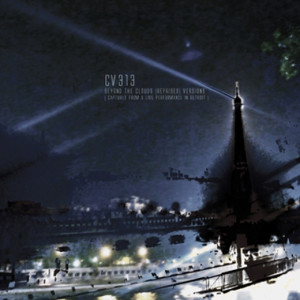 In late 2011 through early 2012, echospace [detroit] issued a series of collectors editions of diverse and previously unreleased and/or unavailable on CD material by Deepchord, Variant, the elusive Sons of the Dragon and, of course, cv313. These professionally duplicated CDs were all housed in plain black slip-cases with square metallic ink artwork stickers inside resealable polybags, giving them the feel of an ongoing series.
In late 2011 through early 2012, echospace [detroit] issued a series of collectors editions of diverse and previously unreleased and/or unavailable on CD material by Deepchord, Variant, the elusive Sons of the Dragon and, of course, cv313. These professionally duplicated CDs were all housed in plain black slip-cases with square metallic ink artwork stickers inside resealable polybags, giving them the feel of an ongoing series.
For many, one of the most crucial of these releases was Beyond The Clouds [Reprised] Versions, a collection of three versions – two previously unavailable – of one of cv313’s most iconic tracks. These three twenty-five minute plus versions packed the CD to capacity, creating an album-length Beyond The Clouds experience that was a significant draw for fans. Originally available exclusively via Discogs.com but later reissued in stickered black digipaks, it’s now also available to purchase digitally via the echospace [detroit] Bandcamp site.
You’ll most likely be familiar with “Beyond The Clouds [Reprise] III” as it this version that appears on the flip side of the Seconds To Forever 12″. Unsurprisingly, given its popularity and acclaim, it’s also probably the most successful expression of the track. Broadly panning tape hiss sprays wide arcs of water crystals across barreling waves of metallic chords, which are joined a few minutes in by ice-chiseled hi-hats and the softest, warmest sub-bass beat imaginable. The perfect balance of ambiance, rhythm, warmth and and chilly outer-atmosphere spaciousness, this is one of cv313’s most immersive works to date.
You have to wait until last for that version, however, the album opening instead with “Beyond The Clouds [Reprise] I”. Essentially very similar to “[Reprise] III,” it strips away the sub-bass and percussion whilst muffling and eroding the rest to create a more distant, almost narcotic experience. As the most laid back of these two versions, omitting as it does, the hooks and rhythmic elements of “[Reprise] III” that draw you in so effectively, it might perhaps have worked better if the running order or the two had been flipped, the more ambient nature of the mix being more suited to an outro than an intro.
It’s “Beyond The Clouds [Reprise] II” in particular that make this collector’s item worth picking up, however, thanks to its radically different tones and textures. Where the other two versions spray and soar, this one squelches and writhes, the melody crushed and smothered by slithering analog keys as supple toms and salt-shaker hi-hats combine with the drier sub-bass to create a totally different palette. It’s a fascinating example of how different treatments of similar source material in a recording session can yield wildly different results.
Something of an esoteric release, Beyond The Clouds [Reprised] Versions is definitely one for the fans and collectors, who will prize the opportunity to own these different variants of a classic track. Interestingly, it seems there must at least another three versions hidden away somewhere that may yet see the light of day on a future LP release. In the meantime, you can also enjoy the classic “Beyond The Clouds [Reprise] III” in beautifully mastered form on the forthcoming Altering Illusions Chapter One: cv313 2xCD set.









